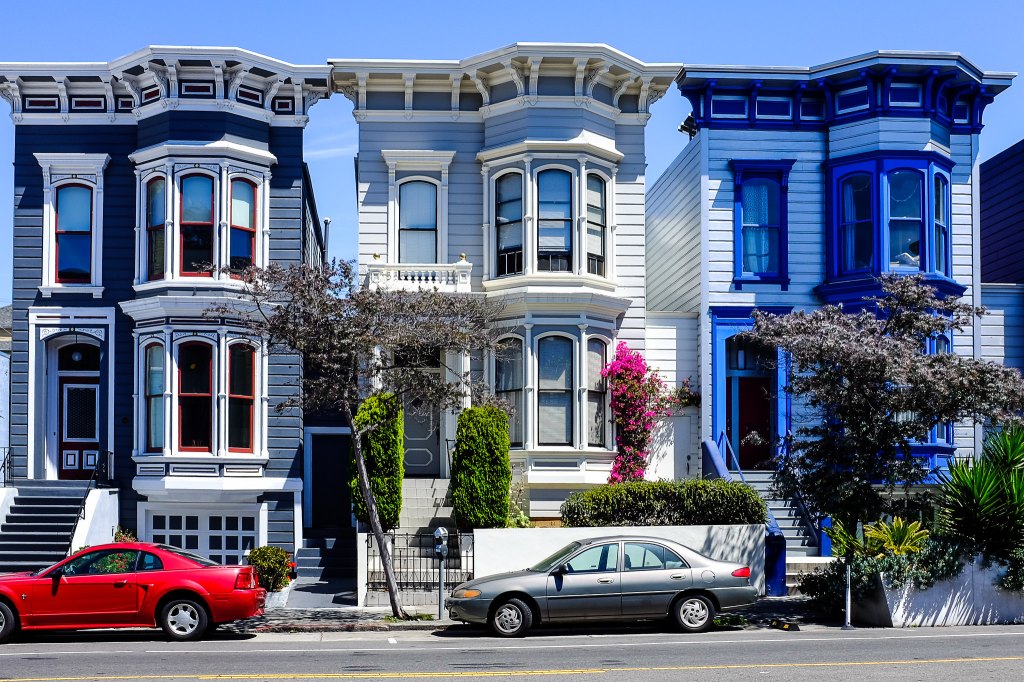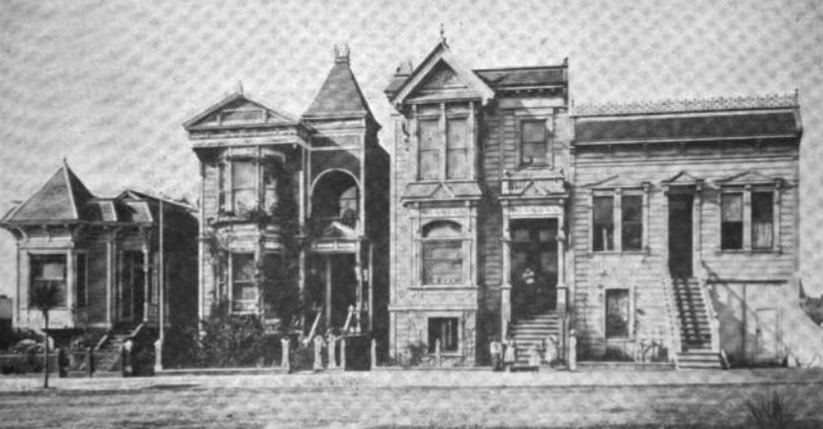There’s a lot more to San Francisco architecture (and the Richmond in particular) than just the Victorians.
But that’s still all some people are interested in–and really, who can blame them? Sometimes a classic is a classic for a reason.
Sometimes we get our terms crossed, though: Strictly speaking, what exactly is a Victorian? What’s an Edwardian? What’s the difference? What are homebuyers actually looking for when they ask?
Well, the architecture may be baroque, but we’ll try to keep it simple:
1. In the broadest terms, Victorians are houses designed and built during the reign of England’s Queen Victoria, from 1837 through 1901.
But not every house raised during that span is a Victorian. What we call Vics today are the relatively cheap rows of homes built in dense British Empire metro centers–OR, those homes that happen to imitate their architectural style.
This can get subjective, of course: We’d argue that in San Francisco, a Vic is more of a spirit than a strict definition–but some definitions are still necessary for such terms to have any meaning at all.

2. In reality, “Victorian” is not one kind of home but many, containing a great many subsets of Victoriana. But in practice, almost everything we associate with classic SF Victorians are part of the “Queen Anne” Victorian aesthetic (a name seemingly designed to confuse us, but we’ll let that slide for now).
If you’ve been in SF for more than an hour, you know the most common hallmarks of the style: Steep peaked roofs, elaborate ornamental gables, lacy spindlework, turrets or towers, asymmetrical facades, raised porches, lots of milling, oh so many bay windows, and shingles and/or other textured patterns and surfaces, but rarely covering the entirety of the facade.
Once upon a time you could also tell a Vic by its labyrinthine interiors, winding halls and staircases, and many compartmentalized rooms, but these days more and more renovations give old Vics open interiors pretty much interchangeable with any modern condo.
3. Chances are you knew all of the above already, or could have guessed it with only a few tries. Here’s where even many longtime San Franciscans stumble: What precisely is an Edwardian, and how to tell the two styles apart?
Edwardian homes recall the comparatively brief reign of King Edward VII, from 1901 to 1910, but just like with Victoria, it’s really more about what kind of homes evoke the style of that period and empire than with the king himself.


Edward being his mother’s son, Edwardians look an awful lot like Vics–indeed, an argument is to be made that Edwardians are just another subset of Victorian in their own right. (Old King Ed might not like hearing that, but he’s hardly around to complain.)
The big difference is that an Edwardian is a little less…well, it’s a little LESS. That is: less ornate, less detailed, less showy, with more streamlined and even utilitarian facades. Architectural trends during this time favored a lighter touch (this is the same period that gave us the Craftsman trend), and older Victorians started to seem extremely busy in some people’s eyes.
This is still a very subjective standard of course, but the effects of the trend are materially tangible: You just didn’t see nearly as many homes with turrets once the 20th century kicked off, and that’s not a coincidence.
To learn more about the snobby city architect who ruined the Richmond’s Vics, see our column here; to learn more about some of these styles, check out our Front Steps guides to Victorian and Edwardian homes, here and here.
Industry leaders in real estate marketing, market data, gossip, and news…theFrontSteps.com
Categories: Alexander Clark Real Estate, History, Real Estate












2 replies »